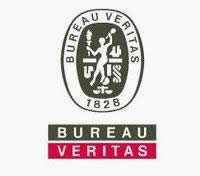Picture Frames: Then and Now
10/09/2011
One of the earliest known examples of a picture frame is in an Egyptian tomb dating back to the 2nd century. A mummy portrait was discovered at Hawara still within its wooden frame, perhaps indicating that images of mummies were sometimes hung in Egyptian homes as commemorative or funereal rites.
One of the earliest known examples of a picture frame is in an Egyptian tomb dating back to the 2nd century. A mummy portrait was discovered at Hawara still within its wooden frame, perhaps indicating that images of mummies were sometimes hung in Egyptian homes as commemorative or funereal rites.
Framing borders in ancient art were used to divide scenes and ornaments by ancient pottery and wall painting artists. However, the first carved wooden frames as we know them today appeared on small panel paintings in twelfth century Europe.
According to a historical series published in Picture Frame Magazine, these early "framed panel paintings were made from one piece. The area to be painted was carved out, leaving a raised framing border around the outside edge, like a tray. The whole piece was then gessoed and gilded. Painting the image on the flat panel was the last thing to be done."
When it was realized this method of producing a frame and the image within in one slab of wood was too expensive to be practical, a more efficient method was developed using moulding strips attached to a flat wooden panel. The results were not dissimilar but the cost was far lower. Early examples of this design, known as an engaged frame, were made of simple wooden moulding strips fixed to the edge of a wooden panel.
At first, most European frames were commissioned by the church. These could not be moved as they were usually altarpieces and formed a large part of a church building's architecture. They were often ornamented with similar elements to make them look like the exteriors of famous cathedrals. The Renaissance in Italy saw a rise in "arts patrons" who were not associated with the church; wealthy nobles who wanted art and frames commissioned for portraits or landscapes as decorative elements. This produced the design of the modern picture frame.
The French Renaissance promoted art further as a part of everyday life, so ornamental picture frames started to have higher demand. Frames were now designed by the same people who built furniture rather than by an artist or sculptor, so they were built to blend in and complement the decor of a room. Books on furniture and interior design started being published and distributed widely.
Picture frames these days are generally square or rectangular, though circular and oval frames are not uncommon. Frames in more unusual shapes (often differently coloured and designed) are usually frames intended for photographs, such as heart-shapes for wedding photo frames or similar.
If you are interested in seeing more modern types of picture frames, customised examples of which are often given as gifts, consider visiting www.occasionphotoframes.co.uk.

























